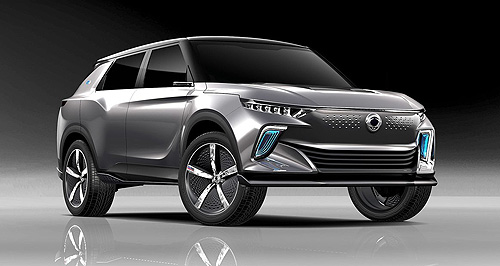In charge: Australia’s lack of EV direction is likely to stymie SsangYong’s plans to rollout an all-electric SUV from 2021.
THE Australian launch of SsangYong’s upcoming all-electric Korando mid-size crossover, due to be launched internationally around April 2021, is likely to be held back until the introduction of national electric vehicle (EV) policies.
Speaking to GoAuto last week at the launch of the Musso XLV, SsangYong executive director of export markets Daniel Rim said pricing is still prohibitively high for EVs, which means the Korean brand is expected to wait for subsidies before bringing to market its emissions-free model.
“Typically, EV (sales) are mandate driven and government policy driven,” he said.
“I guess by the time we launch the EV, depending on the Australian government’s policy, we’ll decide whether we should bring the EV, but if we need to, we’ll be ready to bring it in.
“I mean it’s a question of affordability. Consumers, typically without government subsidy or policy, consumers cannot yet afford (EVs), they have other alternatives.
“So its government mandate that makes that choice more viable for the consumers to get into EVs.”
Early details of the electrified SUV were revealed earlier this year at the Seoul motor show in March, with the emissions-free Korando sporting a 400km driving range under the WLTP test cycle.
A 61.5kWh battery with fast-charging capabilities could also be in the pipeline for production, as is an electric motor that produces 140kW of power.
While Australia might have to wait for the full-electric SUV, 48-volt mild-hybrid versions of the Korando and Tivoli should land in local showrooms in 2021 and 2023 respectively.
The remainder of SsangYong’s proposed product rollout however, which includes a new people mover in late-2020 and another mid-size SUV in 2021, is confirmed to be arriving in Australia, according to Mr Rim.
“Australia is a right-hand-drive market, but there are other markets that are right-hand drive – some in Europe, some in Asia – and we serve all those countries already,” he said.
“So Australia doesn’t have unique requirements.
“All the next vehicles that we’re planning will have right-hand-drive production, so we’ll bring them to Australia, absolutely.”



















Facebook Twitter Instagram